Architect Ferenc Novák and Vince Ede Miller envisioned the easier access to Gellért Hill in 1891 with an electric cogwheel funicular. The idea is not without precedent, in 1884 Guidó Fuchs, the chief engineer of MÁV, designed a steam cable car, and Mór Balázs, who started the tram and underground transport in Budapest, also designed a cogwheel railway on Gellért Hill in 1890.
The plan of architect Ferenc Novák and Vince Ede Miller was already accepted by the Budapest General Assembly, Prime Minister Gyula Szapáry and Minister of the Interior, Gábor Baross, Minister of Commerce, and the Budapest Public Works Council when Miller applied for the transfer of the building permit to Novák. On 9 February 1892, the Financial and Economic Committee of the General Assembly authorized Ferenc Novák to direct the construction of the funicular from the mouth of Döbrentei Street to the top of Gellért Hill, together with the demolition of the Citadel.
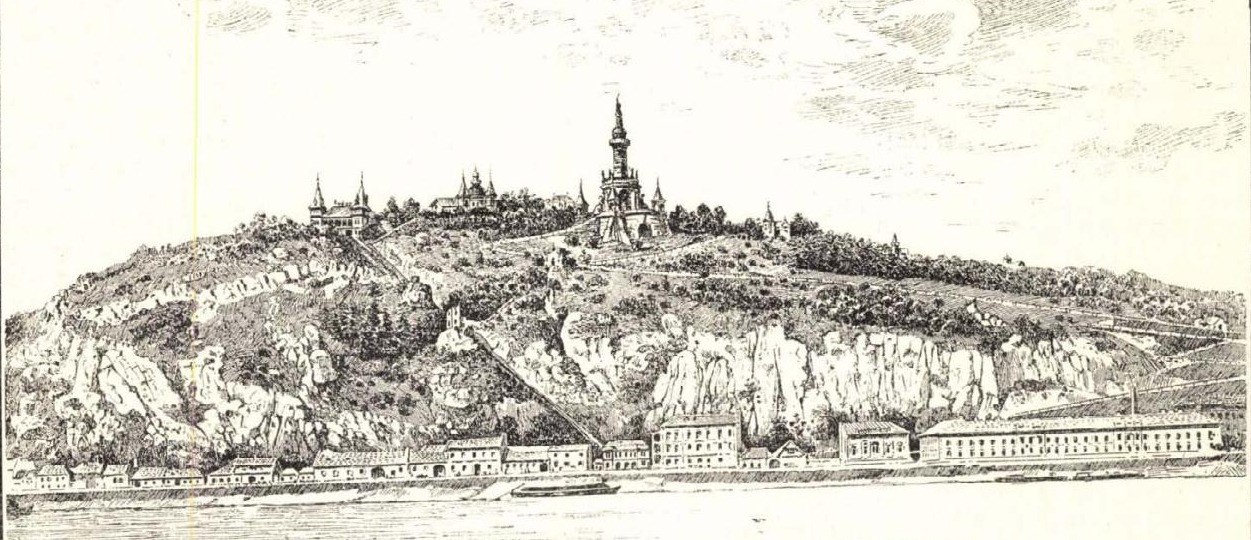
Ferenc Novák originally designed an electric cogwheel funicular for Gellért Hill (Source: Vasárnapi Ujság, 20 March 1892)
Well-known buildings of the Czech architect, František Novák, are the Athenaeum Nyomda (54 Rákóczi Road), 25-27 Erzsébet Boulevard, 62 Bajcsi-Zsilinszky Road and 5 Benczúr Street, known as the birthplace of János Neumann. His residence and architectural office was located in Terézváros since 1892, in the Ellinger Palace at today's 2 / b Németh László Street. He erected the Dvořák statue, which once adorned the facade of the building, next to the Mozart statue erected by the internationally renowned violinist and music teacher Gusztáv Ellinger.
As the president of the Czech Society of Budapest (Česká Beseda), Novák promoted the culture of his country and took part in many charitable events. He received violinist František Ondříček, the first interpreter of the Dvořák Violin Competition, when he gave a concert at the Vigadó in November 1890. He spent the summers in his hometown, Tábor, where he had a family villa built. His plan for the Gellért Hill funicular was also popular in the Czech Republic.
The concept of Ferenc Novák: the comprehensive arrangement of Gellért Hill
Ferenc Novák's plan for the Gellért Hill funicular was presented to the public by the 20 March 1892 issue of the Vasárnapi Ujság. The construction of the electric funicular - after the demolition of the Citadel - would have been connected with the comprehensive arrangement of the Gellért Hill area. At the terminus planned for the top of the hill, a restaurant (co-operated with the funicular), a lookout, a lighted statue and a National Pantheon - reviving Széchenyi's idea of the "Üdvlelde" as a millennium monument - would have enriched the capital's cityscape.
The Vasárnapi Ujság presented the plan of the funicular as follows:
“The upper station would be built with a great, ornate inn next door, with spacious restaurants and an open veranda. In addition, there will be a tower open on every side, from where you can enjoy the most beautiful view of the capital's countryside. The park, planted with deciduous trees on the plateau, would serve as a resort for residents of the capital and strangers as well.
The millennial memorial, the shape of which Mr. Novák does not comment, would be erected where the central smaller bastion of the fortress now stands. In the drawing, we see a huge tower-shaped structure, from the top of which a huge statue would flood the mountain with electric lighting at night.
In the middle of the tram line, an ancient tower ruin would break the uniformity of the line, and the area around the stop to be built there could also be transformed into a fallow grove. ”
The paper also reports that it is envisaged that the funicular “would transport passengers during the day and building material, wood, bricks, etc. at night, which would make the construction of buildings on the Gellert Hill a lot easier. ” Ferenc Novák would have projected the landscape in the vehicle with the help of camera obscura for passengers with fear of heights.
The article from 1892 is cited in several articles as Ferenc Novák's plan from 1872. Twenty years earlier, in fact, Novák had no such idea, in fact, even Guido Fuchs' steam funicular plan from1884 did not exist at that time. The other misinformation is that this 1892 version would have been a steam funicular: contemporary sources make it clear that it is an electric cogwheel funicular.
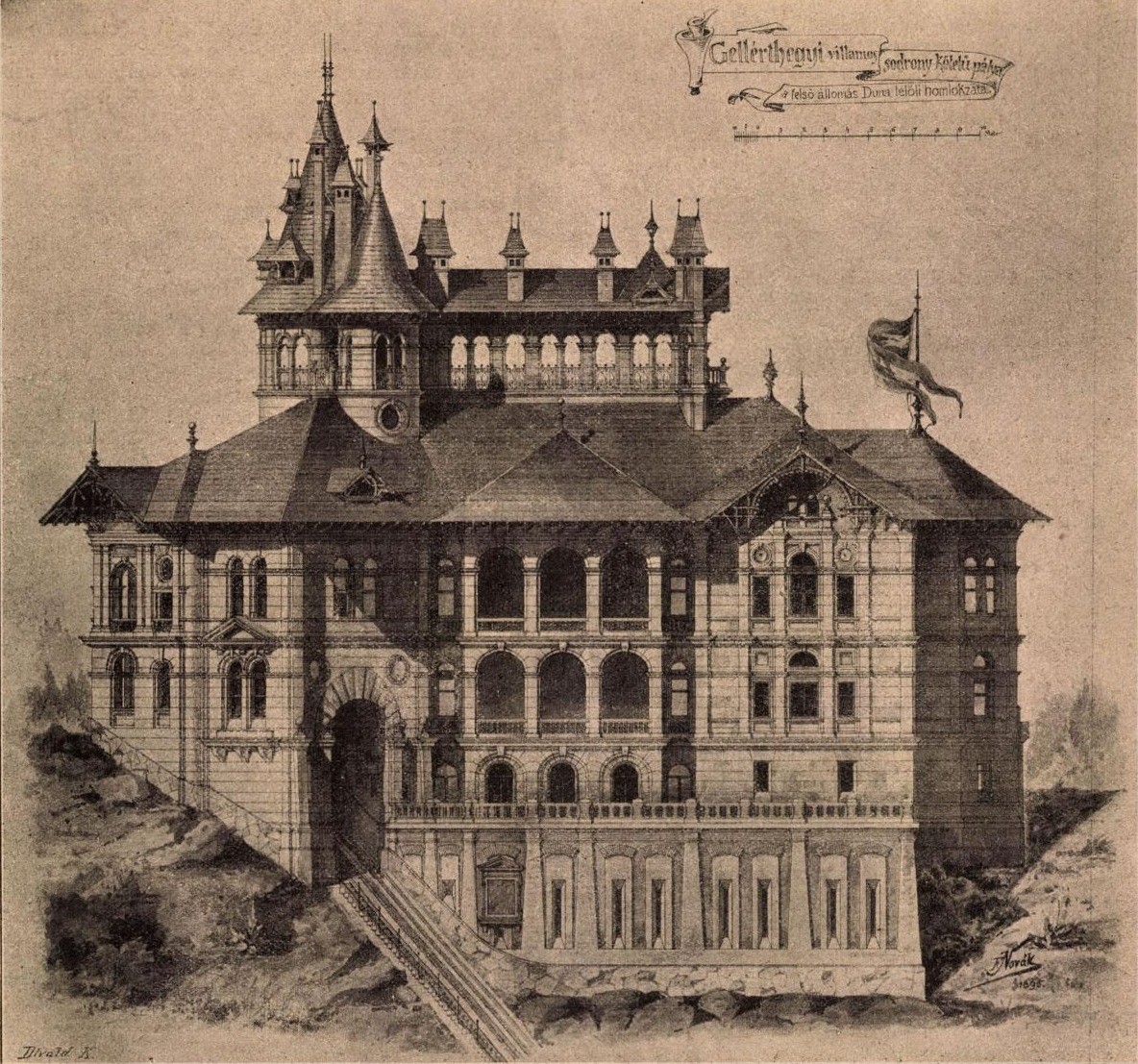
Facade of the upper station of the funicular facing the Danube (Source: Építő Ipar, 31 March 1897)
With a return ticket to Gellért Hill
Although construction work had not yet begun, this did hinder the Finance and Economic Committee of the General Assembly of the capital in deciding on 7 November 1893 that the price of the return ticket on the future funicular was 25 crowns. It was also approved that the funicular would remain in the ownership of Ferenc Novák's company for 75 years from its start, after which it would "transfer to the capital for free." From the 35th year, the capital would have had the right “to redeem the railway: 25 percent of the amount of net income in excess of 8 percent belongs to the capital. If the net income reaches 8 percent, the capital has the right to reduce the tariff. ”
The contract for the construction of the electric funicular was approved by the General Assembly on 5 February 1896. The 75-year ownership right, the “redemption” by the capital after 35 years and the right to reduce the tariff at the 8% limit, as well as the decision on the return ticket were also included. True, at that time the price of the return ticket was capped at 30 crowns, allowing half price for children under one meter and soldiers.
The contract also stated that in the first 10 years the capital would not have received any income at all, after that it would have increased only 1, 2, 3, 4 percent every 10 years, in the last 25 years it would have had only 5 percent.
It has also been determined that the 24-passenger cars will be divided into 3 equal cabs and the maximum travel speed can be 1 meter per second. On the straight track to be built with a 1-meter gauge, the maximum elevation was predicted at 680 degrees. Licensing to operate the restaurant and a camera obscura designed for passengers who were afraid of heights was ultimately not included in the contract.
Ferenc Novák had to deposit 5,000 HUF, and he was stipulated that he was obliged to build the vehicle and hand it over to the travelling public within a year and a half. In case if the contractor breached of the contract, he could have been fined up to HUF 1,000. In the event of a three-day shutdown of the already commissioned funicular, this would have meant that "from the fourth day, the entrepreneur is obliged to pay a fine of 1,000, ie a thousand forints, in favor of the capital for every daily omission". After thirty days, if the contractor is unable to take care of the operation, “the Budapest capital city authority has the right to immediately revoke the land use permit for the railway from the contractor,” the contract included.
Hydraulic funicular instead of electric cogwheel railway
Before the start of the construction, Ferenc Novák changed his idea: instead of an electric vehicle, he planned a water-powered funicular. Interior Minister Dezső Perczel did not approve this, as the contract was "concluded for an electric railway". This allowed the endless negotiations to begin again.
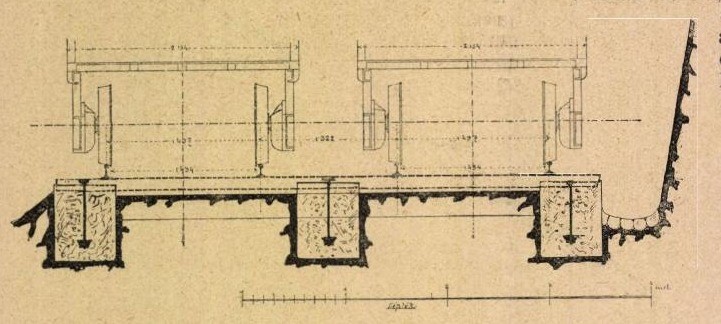
Normal cross-section of the funicular (Source: Építő Ipar, 24 March 1897)
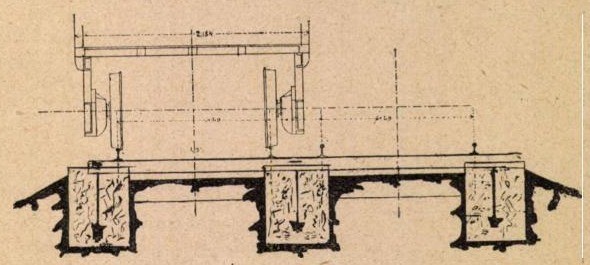
Cross-section of the funicular detour (Source: Építő Ipar, 24 March 1897)
The 7 July 1896 issue of the Fővárosi Közlöny wrote about the design of the water-powered funicular:
"(…) Instead of the contracted electric power, the designer now designs hydropower by pushing the water from the water basin to be built in the lower booth (with a water content of 70-80 cubic meters) into the water tank at the upper station with a Plunger-type steam pump, from where enough water is let in the cars going down so that it can pull the upward-sloping cars by its own weight. The spent water flows back to the reservoir at the lower station, so very little water is needed to maintain the plant. Only the amount that evaporates and is drained during treatment, will be replenished from the capital’s plumbing pipeline. This plumbing pipe is planned to be located to the left of the track, below the steps required by the operating staff. "
The change was approved by the General Assembly and by the Metropolitan Centralization Committee on 10 January 1897.
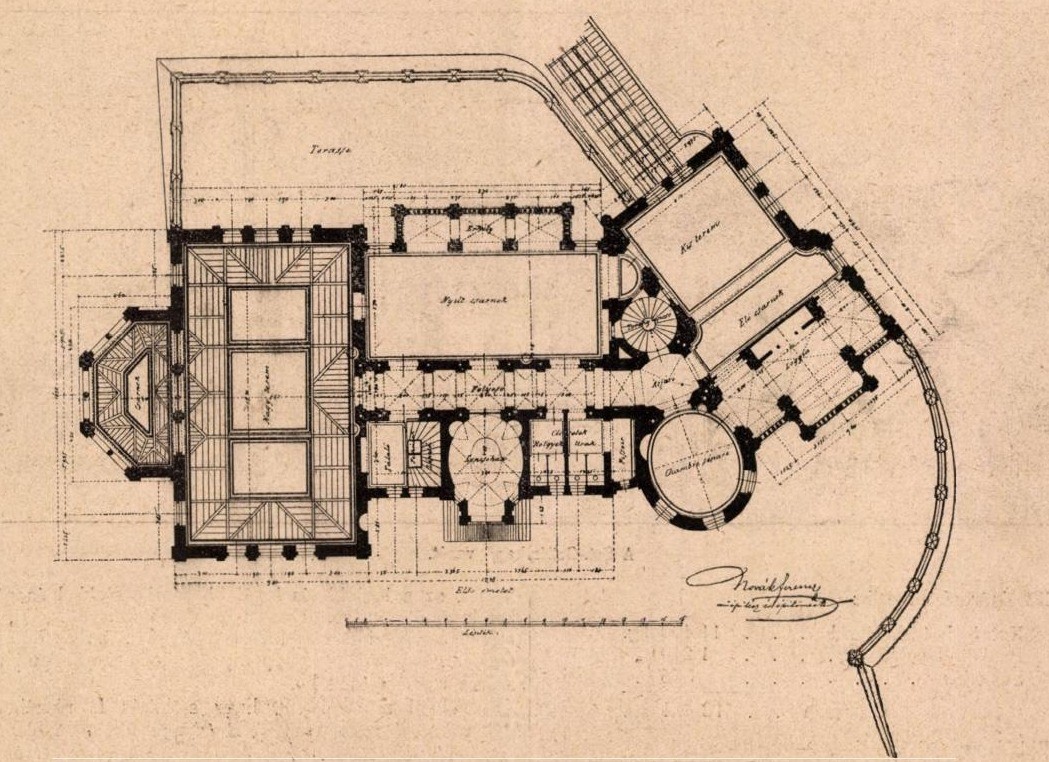
Plans for the Gellért Hill funicular (Source: Építő Ipar, 31 March 1897)
The plan presented with pictorial materials appeared in the 24 March 1897 issues of the magazine Építő Ipar. The name of the English engineer George Croydon Marks, who later worked with Thomas Alva Edison in America from 1911 onwards, is also assigned to the concept. Marks summarized his findings in the book Hydraulic Power Engineering, which is still a major source of technical history.
The Gellért Hill funicular would thus have been a continuation of Marks' three English works (in Clifton, Bridgnorth and Aberystwyth in Bristol). Ferenc Novák officially won over the world-famous designer and the entrepreneur Antal Dőri for his plans, who also lived in London. Another application for a permit has already been submitted jointly.
The hydraulic funicular was approved by Ernő Dániel, Minister of Commerce, on 19 November 1898, on the condition: "The concessionaires are obliged to hand over the course to the traffic within 1 and a half year."
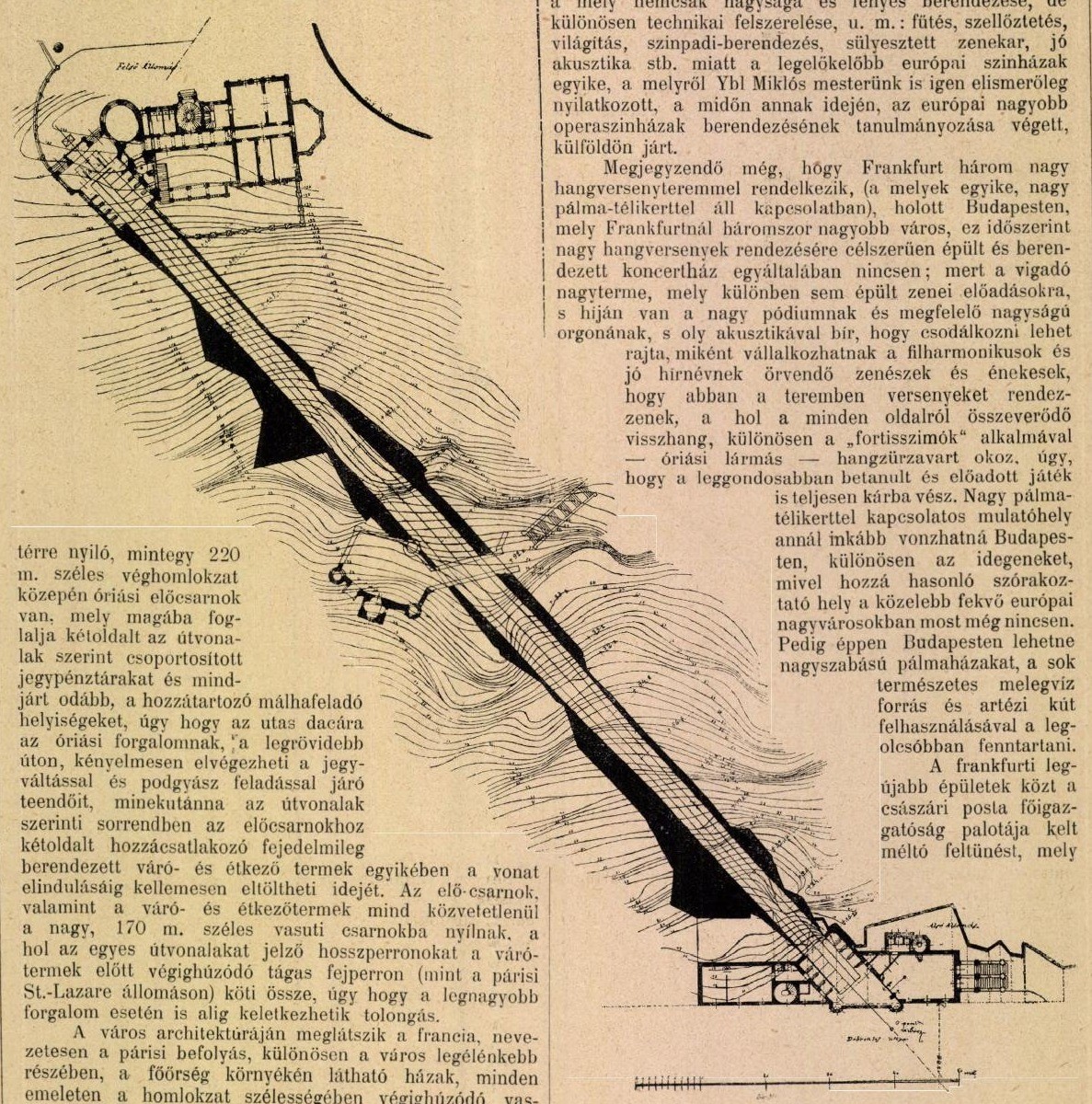
Site plan of the funicular (Source: Építő Ipar, 24 March 1897)
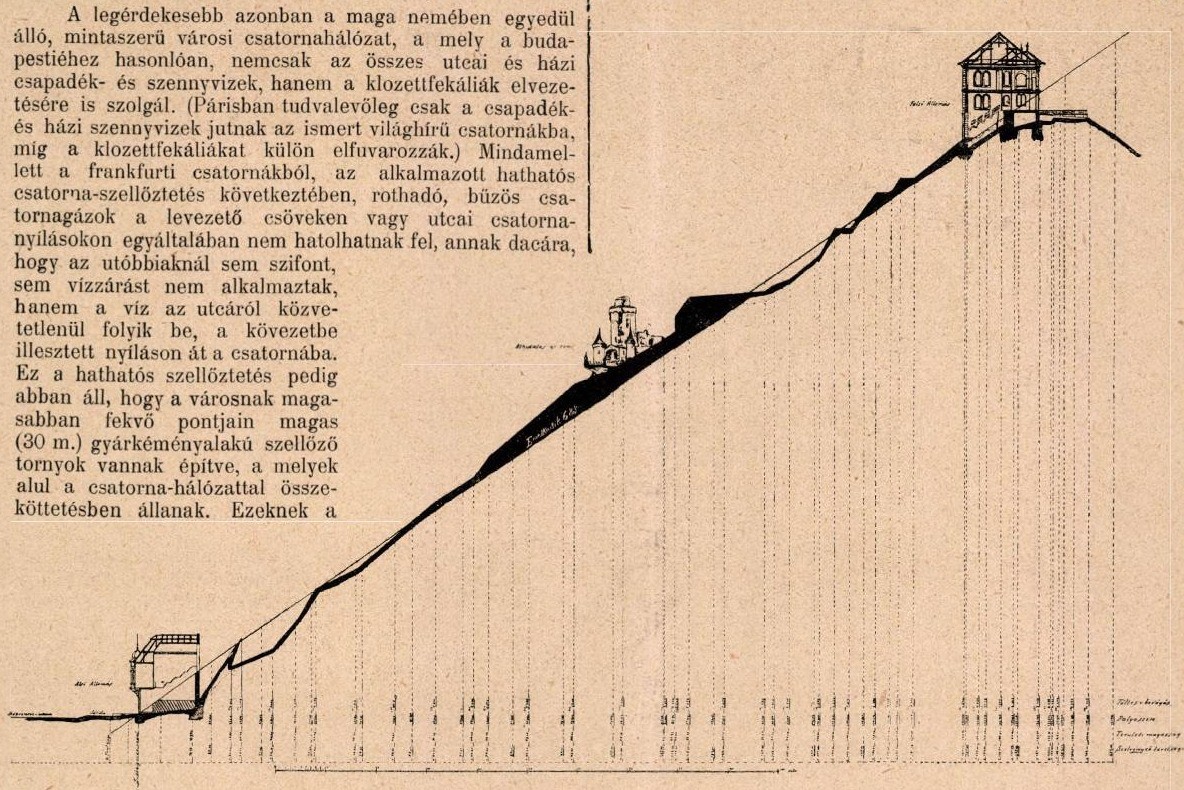
Longitudinal section of the funicular (Source: Építő Ipar, 24 March 1897)
In the end, the Gellért Hill funicular was not built. Ferenc Novák died of pneumonia on 25 January 1903, at the age of 54. His former dream, the Gellért Hill funicular, will hopefully be completed by the end of next year, based on the plans of architect Imre Walton, according to the latest news from April this year.
Cover photo: Plan of the lower station of the Gellért Hill funicular (Source: Építő Ipar, 31 March 1897)

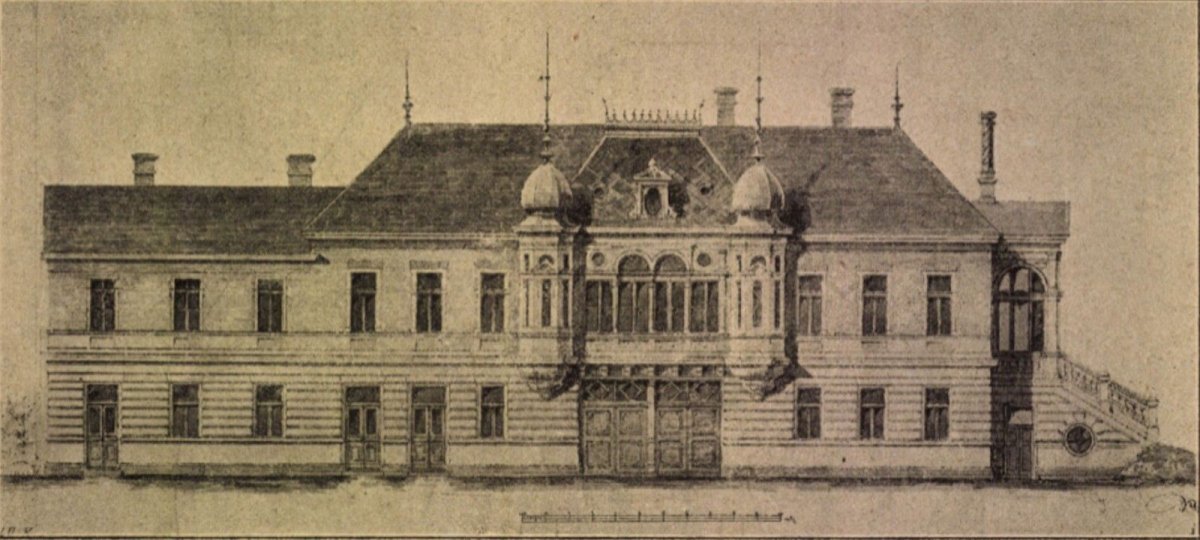



































Hozzászólások
Log in or register to comment!
Login Registration